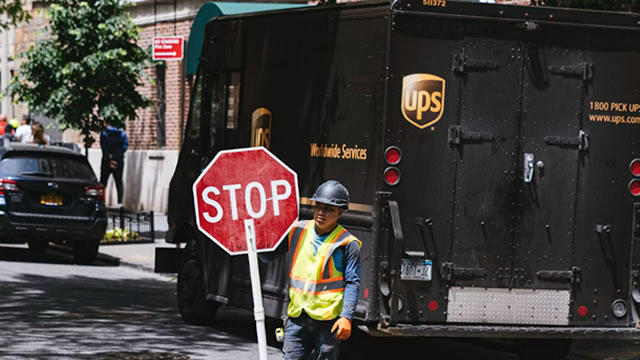
United Parcel Service, Inc. (0R08)
Summary
0R08 Chart

Why the Market Dipped But United Parcel Service (UPS) Gained Today
The latest trading day saw United Parcel Service (UPS) settling at $96.97, representing a +1.49% change from its previous close.

UPS Margins Show Growth Despite Revenue Woes: Scope for More Upside?
United Parcel Service boosts margins to 10% in third-quarter 2025 despite falling revenues, driven by cost cuts and reduced reliance on Amazon.

United Parcel Service (UPS) Recently Broke Out Above the 200-Day Moving Average
From a technical perspective, United Parcel Service (UPS) is looking like an interesting pick, as it just reached a key level of support. UPS recently overtook the 200-day moving average, and this suggests a long-term bullish trend.
United Parcel Service, Inc. (0R08) FAQ
What is the stock price today?
On which exchange is it traded?
What is its stock symbol?
Does it pay dividends? What is the current yield?
What is its market cap?
What is the earnings per share?
When is the next earnings date?
Has United Parcel Service, Inc. ever had a stock split?
United Parcel Service, Inc. Profile
| Air Freight & Logistics Industry | Industrials Sector | Carol B. Tome CEO | LSE Exchange | US9113121068 ISIN |
| US Country | 490,000 Employees | 17 Nov 2025 Last Dividend | - Last Split | 10 Nov 1999 IPO Date |
Overview
United Parcel Service, Inc., commonly known as UPS, stands as a pivotal entity in the package delivery industry, offering a broad spectrum of transportation and delivery services. Established in 1907, UPS has grown to position itself as a global leader headquartered in Atlanta, Georgia. The company's operations are segmented into U.S. Domestic Package and International Package, through which it caters to a diverse clientele offering time-definite and day-definite delivery solutions across the United States and around the globe. UPS is not just limited to package delivery but extends its expertise into areas like distribution, logistics, freight forwarding, and insurance, showcasing its commitment to be a comprehensive logistics provider.
Products and Services
UPS's wide array of products and services is tailored to meet the needs of its global customer base, ensuring timely and efficient delivery and logistics solutions.
- U.S. Domestic Package: This segment offers time-definite delivery of various items, including express letters, documents, small packages, and palletized freight, leveraging both air and ground services within the United States. It is designed to meet the domestic needs with speed and efficiency.
- International Package: Catering to global shipping needs, this segment provides guaranteed day and time-definite international shipping services. It includes time-definite express options across Europe, Asia, the Indian sub-continent, the Middle East, Africa, Canada, and Latin America, ensuring UPS's presence and reliability on an international scale.
- Freight Forwarding: UPS offers comprehensive air, ocean freight forwarding services, and a range of post-sales services. This caters to businesses looking for a reliable partner to handle intricate logistics of international trade, emphasizing on timely and secure cargo delivery.
- Customs Brokerage: As part of its broad portfolio, UPS provides customs brokerage services, facilitating the smooth transition of goods across international borders. This service is crucial for businesses engaged in international trade, requiring expertise in navigating complex customs regulations.
- Supply Chain Solutions: Recognizing the diverse needs of different industries, UPS offers specialized supply chain solutions, particularly for the healthcare and life sciences sectors. These services are designed to manage sensitive products with care, precision, and compliance.
- Insurance: UPS also provides shipment insurance solutions, offering customers peace of mind by securing their goods from potential risks associated with transportation and logistics. This service underscores UPS's commitment to delivering value beyond mere logistics.







